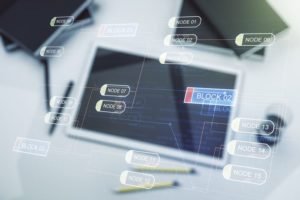Last updated on August 2nd, 2024 at 01:02 pm
Product thinking and product sense are the two standout features in product management. They are the cornerstones for creating outstanding and user-focused products.
These ideas include product discovery and user research frameworks, important tools for any Product Manager.
Product thinking involves the skill of thinking comprehensively about the user experience and the long-term impact of a product.
Product sense, on the other hand, focuses on the intuition and empathy needed to make informed product decisions.
Solid product management courses or product management certifications cover product thinking and product sense in great depth. If you wish to learn these and how to become a product manager in India, read on.
Understanding Product Thinking
Product thinking involves uncovering the fundamental question: "What truly defines your product's utility?"
Customers turn to products to address genuine problems. Product thinking helps to identify these issues and comprehend precisely how our product serves as a remedy.
By adhering to the principles of product thinking, we adopt a comprehensive view of the product rather than fixating solely on its features.
How can I practise product thinking, and why is it important?
Product thinking stands at the core of effective UX design by safeguarding against the creation of unwanted, unnecessary features. Its essence is ensuring our focus on the complete user experience rather than a mere assortment of appealing functionalities.
There's a risk of becoming engrossed in crafting exceptional designs and experiences while losing sight of the fundamental reason customers initially engaged with your product if you need more product thinking.
To embrace a product-centric perspective, consider these three fundamental steps:
- Identify the customer and the problem requiring resolution. Confirming that you're addressing a genuine issue real individuals face is imperative.
- Unearth the product's specific roles. Understand the purpose behind building the product and how it fulfils your customers' fundamental requirements.
- Determine the sought-after outcomes. Ultimately, you must possess a clear vision of your goals for the product and identify the features essential to realising that vision.
The Importance of Product Sense
Product sense embodies the ability to grasp an audience's essence and craft products that precisely cater to their needs.
It includes a blend of competencies, allowing product managers to conceive products, create roadmaps, prioritise features, and design user experiences in alignment with their target audience.
Individuals with a robust product sense understand market dynamics, competition, and user preferences, leveraging domain expertise to create standout products.
Developing such products requires a spectrum of skills, including market research, UX design, business strategy, and project management—vital for product leaders, entrepreneurs, and anyone in product management.
Product sense differs from basic intuition, as proven by industry experience. A product management course in India or a product management certification can help you acquire product sense.
Why is it important for product managers to have product sense?
Developing product sense offers several crucial advantages. Firstly, it enables companies to create user-centric products that effectively address market needs, increasing sales and enhancing customer satisfaction.
Secondly, mastering efficient product development helps companies maintain a competitive advantage. In-depth market insights empower companies to identify opportunities and introduce distinctive products.
Lastly, crafting products that fulfil user requirements saves resources and time. Prioritising features and establishing a clear product roadmap streamlines development, reducing costs and speeding up time-to-market. Applying for senior product roles often involves answering product sense-related questions in interviews. Thus, if you wish to become a product manager, you must possess great product sense.
IIT project management programs cover product sense in a way that helps you use your acquired skills effectively in real-world situations.
Examples of Product Sense in Product Management
Consider some renowned products to emphasise the pivotal role of product sense for product managers.
Google Search
Google Search is an example of a product grounded in a robust product sense. Google recognised an opportunity within the search engine sphere: a hunger for swift and precise results.
Despite numerous extant search engines like Yahoo and DuckDuckGo, Google's understanding of market nuances and user priorities—speed and accuracy—enabled them to devise a product that not only unanimously captured the search engine domain but continues to do so.
The market may have appeared saturated with inventive solutions, but Google's unwavering product sense encouraged them to offer an unparalleled and distinctive product.
iPhone
The Apple iPhone is a stellar example of a product born from astute product sense and an innovative outlook.
Apple discerned a market void yearning for a user-friendly smartphone with a spacious touch screen for seamless internet access. While the BlackBerry hinted at the appeal of handheld internet accessibility, Apple transcended existing offerings to materialise what they believed the market truly desired.
Apple devised a cultural icon by comprehending market dynamics and user requisites, propelling it far beyond BlackBerry's classification as a mere "internet device."
How to Develop Product Sense
Mastering crafting products tailored to people's needs is a skill honed through experience. Here are strategies to nurture your product sense:
- Know your audience - Product champions comprehend their target demographic and their desires. Employ market research and user testing to glean profound insights into your audience's cravings.
- Competitive vigilance - Navigate the competitive terrain adeptly. Unearth market cavities that you can deftly fill.
- Feature prioritisation - Formulate a lucid product roadmap and prioritise features catering to paramount user requisites.
- Test and enhance - Relentlessly refine your product by leveraging data and user feedback. Throughout the product management voyage, iteratively fine-tune features and design to deliver a product attuned to user demands.
- Strategic prowess - Forge a business strategy harmonised with your product objectives. Contemplate aspects like pricing, marketing, and distribution that are pivotal in your product's journey.
Initiating Product Discovery
The five stages of product discovery are:
Stage 1: Ideation
Ideation is where everything starts. You come up with a viable product concept during ideation. It might provide a solution, unveil a fresh idea, or improve a current offering. The secret is to develop a concept with promise.
Encourage feedback from sales associates, engineers, and customers as ideas can emerge from various places. Aligning these concepts with your team's strategic objectives is your responsibility as a product manager.
Stage 2: Research
With an idea in hand, the next stage involves thorough research and market analysis. This step determines whether your product idea is feasible. You must assess its viability in terms of available resources, user satisfaction, and its relevance in the market.
Ideas are valuable, but their potential depends on their feasibility.
Stage 3: Prototyping
In the prototyping stage, you create a functional model of your product, showcasing its core features. Prototypes can range from simple to complex but serve to test, refine, and validate your product without significant time or financial commitments.
As a Product Manager, your role is maintaining momentum within your team. You'll decide whether to advance to the next stage or revisit the research phase. Considering the "Four Big Risks" and ensuring your prototypes address user problems is critical.
Stage 4: Production
After prototyping, the product discovery process moves to the production phase. It is where your product comes to life, and the team seeks feedback as they bring the concept to fruition.
Here, the Product Manager role shifts to a support function for engineers and designers. You become their go-to resource, ensuring they have the tools and support needed for a smooth production process.
Stage 5: Launch and Marketing
The final stage is the launch and marketing phase. Here, you introduce your product to the market and begin the process of capturing potential customers.
It's a multifaceted endeavour involving defining your target audience, setting pricing strategies, devising marketing approaches, and crafting a brand identity.
It is also where the culmination of your preparatory work pays off. All stakeholders are informed and aligned to champion your new idea. The journey of product discovery is a multi-stage expedition that involves ideation, research, prototyping, production, and, ultimately, a triumphant launch into the market.
Key Elements of User-Centred Design
While fancy features and technological capabilities are frequently prioritised in system designs to achieve corporate objectives, the end user, a critical component of the process, must be addressed.
By keeping the end user in mind when creating tools like website interfaces or SaaS apps, User-Centred Design (UCD) changes the emphasis. It adjusts the system to correspond with users' attitudes, behaviours, and beliefs towards the targeted tasks.
UCD implementation improves the final product's effectiveness, satisfaction, and usability. Sales improve as a result, and clients stay loyal.
Usability and Its Importance
Usability measures how well a product helps users achieve their goals effectively and efficiently. It's all about having a user-friendly design that's easy to learn and supports your tasks. Poor usability can save time and effort and impact a system's success.
Key Principles of User-Centred Design
User-centred design is based on principles focused on usability throughout the design-driven development process and the system life cycle.
The fundamental principles for customising usable systems to meet your unique interaction needs are as follows:
1. Design for users and their tasks
Develop interactive systems with users in mind, ensuring alignment with real-world tasks and environments throughout development.
2. Maintain consistency
Promote a system that's easy to learn and coherent in its interface elements, enhancing user adoption and reducing learning time.
3. Simplify dialogue
Integrate core system functions into a user-friendly interaction, focusing on essential information and using plain, audience-relevant language.
4. Reduce user mental effort
Minimise distractions and mental workload for users by offering straightforward, intuitive interactions, clear instructions, and task-focused design.
5. Provide feedback
Ensure users receive feedback about task completion through visual cues, indicators, and clear responses, bolstering user confidence.
6. Streamline navigation
Enable smooth user navigation with efficient and consistent mechanisms, including window titles, page numbers, and scrolling aids.
7. Empower users
Allow users to control their interactions with the system, minimising imposed constraints and supporting individual preferences.
8. Clarify information presentation
Organise on-screen data using visual elements like boxes and spaces, delivering only essential information.
9. Offer assistance
Create self-explanatory systems, aligning on-screen information with user tasks and providing tool tips for icon-labelled buttons. Task-oriented online help should be accessible.
10. Minimise errors
Guide users to prevent errors, using plain language for error messages, pinpointing issues, and offering solution suggestions. Validate data entry at input points to enhance the user experience.
How to Maximise Usability
Maximising usability is achievable through iterative design, which progressively improves the design based on user and client feedback from the early stages. These steps guide the system toward optimal usability.
Real-user testing within an operational system is the most effective method for ensuring usability. Achieving high usability requires dedicated design efforts focused on the end-user of the specific system.
Key techniques for identifying primary users, understanding their work, and defining their tasks involve user testing with system prototypes, usability audits conducted by experts, and cognitive modelling.
Strategies for Validating Product Ideas
What is product validation?
Product validation is critical in confirming market demand for a product, whether you're an established brand or a new entrepreneur. It's essential for mitigating the risks of investing in a development that may not find buyers, which could lead to substantial financial losses or business failure.
You need various product validation methods to tackle these high stakes, including customer and competitor research, social media monitoring, and pre-orders.
Regarding digital products like apps and software, prototyping and user experience interviews become vital. They help ensure users connect with the product concept, see its value, and are willing to purchase.
Validation methods can vary, depending on whether the product solves a customer's problem or caters to emotional or entertainment needs, which may require validating marketing interest data.
Certifications for product managers are essential for learning about validation methods.
The Importance of Product Validation
Product validation is a crucial initial step for launching any new product or business, benefiting entrepreneurs, companies, teams, and customers.
For entrepreneurs, it means investing with a higher chance of a profitable return.
Within the team and company, it fosters a shared understanding of the product vision, increases buy-in from decision-makers, and minimises confusion, disagreements, and unnecessary shifts in direction.
Customers, in turn, reap the rewards by feeling understood and meeting their needs.
Successful companies worldwide rely on specific processes to ensure they're not just building something based on one person's perspective.
Four Methods for Confirming a Product Concept
Low-fidelity prototyping
Use low-fidelity prototypes, particularly valuable for software and app validation. Evaluate whether the product addresses user problems, offers an improvement over existing solutions, the likelihood of users transitioning to it, potential pricing models, essential features, and nice-to-have additions.
Smoke test landing page
Implement the "smoke testing" idea by creating a preliminary landing page. Redirect users who express interest to a page that informs them the product is not currently available but offers to notify them upon its launch. This approach is reliable for assessing user interest and measuring conversion rates.
Pre-ordering
Consider collecting pre-orders for products evolving from existing ones, provided you can fulfil them through trusted manufacturing, warehousing, and shipping processes. Pre-orders help determine whether a product should proceed based on reaching a minimum order threshold.
Customer research
When the above methods aren't feasible, rely on customer research. Start with interviews and surveys to gather valuable feedback. Share this market interest data with potential investors or business partners to demonstrate concept validation. Subsequently, consider prototype development, smoke testing, or pre-order campaigns to validate the product further.
Methods to Collect Data for Validating a Product
Consider these effective validation methods to ensure your product concept is well-vetted before investing:
Competitor research
Study your competitors to assess the potential need for your product. Analyse corporate financial reports, social media following, and workforce size. If competition is limited, evaluate if your idea is ahead of its time or potentially not worth pursuing. Adjust your product or target market to carve out a niche.
Customer interviews
Conduct customer interviews, a vital validation technique. Identify target customers online and request interviews, possibly offering incentives like gift cards for their time. Inquire about their likes and dislikes regarding similar products, their opinions on your product concept, price willingness, and suggested modifications.
Surveys
Use product research surveys created with tools like SurveyMonkey or Typeform. Build a target customer list or seek the assistance of a market research firm to locate participants.
The volume of data collection correlates with your product development investment, but aim for a substantial number, typically between 100 and 1,000 survey responses.
Focus groups
Organise focus groups composed of your target customers to facilitate open-ended discussions. It is ideal when your product concept requires further refinement or clarification on specific aspects. Discussions with participants can guide decision-making.
Pre-orders
Implement pre-orders, a strategy where customers express genuine interest through financial commitments. Create a straightforward order form or a well-designed pre-order landing page, allowing you to gather concrete product validation data.
Audience interest
Monitor audience interest across various marketing channels. Track metrics such as email open and click-through rates, paid advertising performance, and social media engagement to gauge product appeal and pricing considerations.
Social media polls
Engage your audience with social media polls on platforms like Twitter or LinkedIn. Poll them on product-related aspects, including versions, names, features, or colours, to gather valuable insights.
Social media intelligence
Utilise social media intelligence tools, such as StatSocial, and manual research to efficiently process extensive data about your target audience.
Leverage advanced algorithms and machine learning techniques to analyse social media insights and understand audience preferences.
Product reviews
Review product feedback and identify areas for improvement. If your audience suggests specific changes, such as a more extended handle for a straightening iron, make those adjustments based on their input. Conversely, if a competitor receives negative feedback on a similar product concept, it indicates further research and development needs.
Iterative Prototyping and Testing
Iterative prototyping is a product development approach that involves creating and refining multiple versions or prototypes of a product or feature over time.
Each iteration builds upon the previous one, incorporating feedback and improvements. It's a cyclical process until the product achieves the desired quality and functionality.
Benefits of Iterative Prototyping
Enhanced product excellence
Iterative prototyping prioritises frequent interactions with users and incorporates their feedback into each design iteration. This continuous feedback loop ensures the final product matches user requirements and expectations.
The product quality is consistently elevated by addressing issues and making improvements early in the process.
Cost-efficiency
The process of iterative prototyping is focused on detecting and resolving issues at an early stage. This early identification of problems helps reduce development costs by avoiding the allocation of resources to build a full-scale product that might later fall short of specifications. As a result, you can conserve and utilise sources efficiently.
Expedited time-to-market
Iterative prototyping encourages the creation of smaller, manageable prototypes. You can develop and test these prototypes more quickly than a complete product.
Businesses can introduce an initial product version to the market faster by focusing on manageable iterations. It can be particularly advantageous in competitive industries where speed is essential.
Robust risk management
Early identification and mitigation of risks and issues are inherent to iterative prototyping. Businesses can significantly enhance their risk management practices by addressing challenges arising during the design and testing phases.
It minimises the likelihood of costly problems and complications emerging in the later stages of product development.
Improving the Iterative Prototyping Process
- User-centric emphasis: Elevate user needs and feedback as the top priority. Engage real users regularly for testing and input.
- Interdisciplinary collaboration: Foster collaboration among diverse teams, such as designers, developers, and product managers, to leverage a range of perspectives and expertise.
- Data-informed decision-making: Base your choices on analytics and user data to determine which features or enhancements to focus on in each iteration.
- Agile practices: Implement Agile methodologies like Scrum or Kanban to manage and prioritise work efficiently, breaking it into manageable tasks.
- Thorough documentation: To ensure clarity and consistency, maintain comprehensive records of alterations, feedback, and decisions throughout each iteration.
- Ongoing assessment: Continuously evaluate the efficiency and productivity of your iterative prototyping process. Adapt and refine your approach as needed.
Conclusion
Mastering product thinking and product sense and effectively using product discovery and user research frameworks are the keys to creating remarkable products that truly resonate with users. Becoming a proficient product manager is one of continuous learning and refinement.
Consider enrolling in Imarticus Learning's Professional Certificate in Product Management with CEC, IIT Roorkee programme, to sharpen your skills and boost your career in product management. Our product management certification gives you the skills and information necessary to succeed in the fast-paced field of product management.
Visit Imarticus Learning today for more information.









